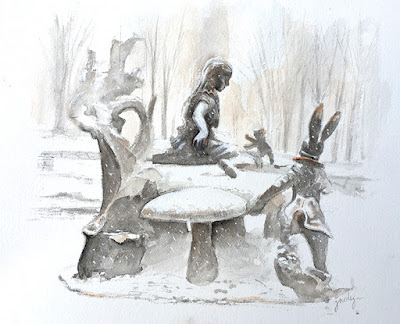
Being an artist who has spent twenty years exploring the possibilities of glass as an art form and one who knows the importance of such great artists as Tifanny and Lalique I have always been fascinated by the properties of this wonderfully fragile substance. I have always known that glass is actually a "slow liquid" and that in time windows actually "seep down" and get thicker at the bottom as in old homes and churches. Glass is like not unlike the artist Jackson Pollock in that no matter how hard he tried he could never draw or paint very well and by this I mean glass no matter how hard it tries it can never become a true solid. If you are an artist you must "know thyself" (in a socratic sense) and if you are neither fish nor fowl you will never rise to the challenge of making good art that will last longer than a frog on the jersey turnpike. Here is some more fascinating news regarding a groundbreaking discovery in the study of glass and what it can mean for the future of art and non-art.
Icosahedron jams
Some materials crystallize as they cool, arranging their atoms into a highly regular pattern called a lattice, Royall said, but although glass "wants" to be a crystal, as it cools the atoms become jammed in a nearly random arrangement, preventing it from forming a regular lattice.
In the 1950s, Sir Charles Frank in the Physics Department at Bristol suggested that the arrangement of the "jam" should form what is known as an icosahedron, but at the time he was unable to prove it.
An icosahedron is like a 3-D pentagon, and just as you cannot tile a floor with pentagons, you cannot fill 3-D space with icosahedrons, Royall explained. That is, you can't make a lattice out of pentagons.
When it comes to glass, Frank thought, there is a competition between crystal formation and pentagons that prevents the construction of a crystal.
If you cool a liquid down and it makes a lot of pentagons and the pentagons survive, the crystal cannot form.
It turns out that Frank was right, Royall said, and his team proved this experimentally.
You can't watch what happens to atoms as they cool because they are too small, so Royall and his colleagues used special particles called colloids that mimic atoms, but are large enough to be visible using state-of-the-art microscopy.
The team cooled some down and watched what happened.
What they found was that the gel these particles formed also "wants" to be a crystal, but it fails to become one due to the formation of icosahedra-like structures — exactly as Frank had predicted.
"It is the formation of these structures that underlie jammed materials and explains why a glass is a glass and not a liquid — or a solid," Royall said.
The findings are detailed in the June 22 issue of the journal Nature Materials. The research was supported in part by a grant from Britain's Ministry of Education, Culture, Sports, Science and Technology as well as the Royal Society.


No comments:
Post a Comment